Introduction
The University of Pisa is a national research university located in Pisa, Tuscany, Italy. It is the 19th oldest university in the world and the 10th oldest university in Italy. It has the oldest academic botanical garden in Europe.
Overview
Number of students and faculty: In 2022-2023, the total number of students is 34,459, including 2,033 international students; 1,541 academic staff and 48 international faculty; 4,335 undergraduate degrees, 3,274 master's degrees and 426 doctoral degrees are awarded.
Campus distribution: The main campus is located in Pisa, and the colleges are scattered in the city, but the student secretariat is concentrated in the Pisa University Office Hall in the east of the city.
History
Its origins can be traced back to the 11th century, when there were secular and monastic schools of law in Pisa. In the 13th century, documents proving the existence of medicine and surgeons appeared. In 1338 In 1343, the jurist Ranieri Assendi moved from Bologna to Pisa, and together with the civil law lecturer Bartolo da Sassoferrato, he was hired by the municipal authorities to teach public courses.
On September 3, 1343, the Papal Council approved by Pope Clement VI recognized the Basilica of Pisa as a normal school, and the University of Pisa was officially established. At that time, the main subjects taught were theology, civil law, canon law and medicine.
At the turn of the 15th century, Pisa and the University of Pisa experienced a crisis. Due to the conquest of the town by Florence, the university was closed in 1403. In 1473, it was restored and developed under the promotion of Lorenzo de' Medici. In 1486, the "Knowledge Building" for classes was built.
On November 1, 1543, under the rule of Duke Cosimo I de' Medici, the university reopened. The regulations of 1545 further improved the quality of the university. The chair of botany was held by Luca Gini, the founder of the world's first botanical garden.
From 1839 to In the 1840s, the Director of Education Giorgini carried out important reforms on the University of Pisa, increasing the number of faculties to six, namely theology, law, literature, medicine, mathematics and natural sciences, and created the world's first chair in agriculture and sheep farming.
In 1967, the University of Sant'Anna of Pisa was established, and together with the Scuola Normale Superiore of Pisa, it formed a learning and teaching center.
Foundation time
1343.
School strength
Faculty: It has 1,541 academic staff, including well-known experts and scholars in various fields, who can provide students with high-quality teaching and guidance.
Teaching resources: The school has 20 departments and a number of advanced research centers, such as research centers in agriculture, astrophysics, computer science, engineering, mathematics, medicine and veterinary medicine. In addition, the school has 16 libraries of various sizes, with a collection of 400,000 books, 840 journals, and 13 museums and collection centers, providing rich resources for teaching and scientific research.
Institutional nature
National university.
Educational philosophy
Focus on cultivating students' comprehensive literacy and innovation ability, emphasizing the close integration of teaching and scientific research, and enabling students to master professional knowledge while having the ability to solve practical problems through theoretical learning and practical operation. Students are encouraged to actively participate in scientific research projects and academic exchange activities, cultivate students' international vision and teamwork spirit, and cultivate outstanding talents with a high sense of responsibility and professional ability for the society.
Key laboratories and disciplines
Key laboratories: The school has advanced research centers in many fields. For example, the laboratory in the field of computer science is an important base for computer science and artificial intelligence research in Italy, and has achieved a series of important results in related research.
Advantageous disciplines: Mathematics, physics, computer science, history, archaeology, modern linguistics, electrical engineering and other disciplines have obvious advantages. In the QS World University Rankings, physics ranks 35th, agricultural science ranks 182nd, food science and technology ranks 149th, and clinical medicine ranks 194th. =Position, etc.
Faculty
The University of Pisa has 11 faculties, including the Faculty of Agriculture, the Faculty of Economics, the Faculty of Pharmacy, the Faculty of Law, the Faculty of Literature and Philosophy, the Faculty of Foreign Languages and Foreign Literature, the Faculty of Medicine, the Faculty of Veterinary Medicine, the Faculty of Engineering, the Faculty of Mathematics, Physics, Natural Sciences and the Faculty of Political Science.
Ranking
Ranked 349th in the 2024 QS World University Rankings and 219th in the 2022-2023 U.S. News World University Rankings.
Expenses
The tuition fee for the English-taught undergraduate program iph is 3,200 euros + university tuition fees. The tuition fees for business and economic management vary depending on whether a scholarship is applied for. The total tuition fees for the English-taught master's program range from 2,452 euros to 3,560 euros. For example, the tuition fees for aerospace engineering range from 250 euros to 2,100 euros per year.
Campus Environment
Architectural style: The campus has a variety of architectural styles, integrating architectural features from different periods such as the Middle Ages and the Renaissance, such as the "Knowledge Building" Ancient buildings such as the University of Science and Technology carry the history and cultural heritage of the school, creating a strong academic atmosphere for students.
Learning and living facilities: In addition to the rich library resources, the school also provides students with good learning and living facilities, such as cultural facilities such as libraries, museums, collection centers, and various sports facilities and student activity venues to meet the diverse needs of students.
-
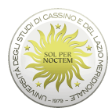
University of Cassino and Southern Lazio
-

University of Campania Luigi Vanvitelli
-
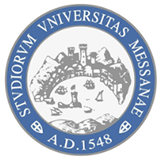
University of Messina
-
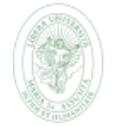
Libera Universita degli Studi Maria SS. Assunta di Roma (LUMSA)
-
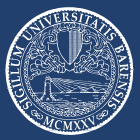
University of Bari Aldo Moro
-
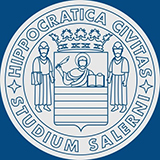
University of Salerno
-
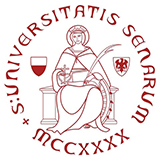
University of Siena
-
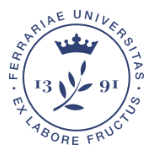
University of Ferrara
-
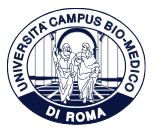
Campus Bio-Medico University of Rome
-

University of Genoa
-

Mesoamerican University
-

Istmo University
-

Mariano Galvez University of Guatemala
-

Regional University of Guatemala
-

Galileo University
-

Francisco Marroquín University
-

Rafael Landívar University
-

University of the Valley of Guatemala
-

University of San Carlos of Guatemala
-

Technological Institute of Tlaxcala Plateau
-

Golfo University
-

Technological University of South Sonora
-

Technological University of Huejotzingo
-

Tizimín Institute of Technology
-

Chilpancingo Institute of Technology

